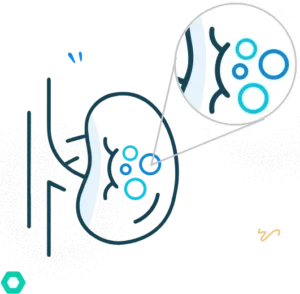Made Stress-Free Reliable Hassle-Free Convenient Pocket friendly
Request a call back
The surgery you need is
just a click away


21K +
Consultations

1180
Surgeries

100+
Partner Hospitals

10000+
Hassle-free Consultation

5000+
Smooth surgeries

500+
Expert Doctors

100+
Trusted hospitals

Affordable Kidney Stone Surgery in Mumbai
- 30 Min Procedure
- Free Pick Up & Drop
- No Stitches
- Complete Insurance Support
- Minimal Pain
- Post Surgery Assistance
About Circumcision
Doctors & Hospitals
Why aapkacare
FAQ
What are Kidney Stones?

Identifying the signs of Kidney Stone
Excruciating pain clinically known as renal colic
Blood in the urine (red, pink, or brown urine)
Discoloured and foul-smelling urine
Nausea, fever with chills
Urge to urinate frequently, but only in small amounts at a time.
Understanding the causes of Kidney Stone
kidney stones develop.
Here are some factors that increase the risk of kidney stones:

Very low fluid intake results in more concentrated urine, leading to the accumulation of minerals and the formation of kidney stones
A high animal protein diet, and high calcium intake also contribute to increasing the risk of kidney stones

Consumption of too much salt increases the amount of calcium the kidneys have to filter

Obesity and quick weight gain have been linked with increased chances of developing kidney stones

Diarrhoea, inflammatory bowel diseases can affect the absorption of regular amounts of calcium and water

Urinary tract infections and metabolic disorders increase the risk of kidney stone formation
These are the most common types of kidney stones.These develop when the urine has high levels of calcium, oxalate, or uric acid but low levels of citrate.Oxalates are a chemical that is present in both plants and animals naturally.Beets, black tea, chocolate, almonds, potatoes, and spinach are a few of the foods high in oxalates.
Kidney stones made of calcium phosphate are caused by malfunctions in the urinary system.This form of stone, which frequently develops along with calcium oxalate stones, may be caused by urinary or renal issues.To rule out these possibilities, your kidney stone doctor may prescribe a number of blood and urine tests.
Struvite stones develop as a result of some particular kinds of urinary tract infections, and they are more common in women.These stones frequently develop, grow large, and occasionally take up the entire kidney.They can result in recurrent, occasionally severe urinary tract infections as well as renal damage if left untreated.
Uric acid stones more frequently occur in men than in women who don ‘t drink enough water or who consume a lot of animal proteins.Additionally, they are more likely to develop in patients with gout, who have a family history of these kidney stones, or who have undergone chemotherapy.
Cystine stones are brought on by cystinuria, a genetic condition that runs in families and can result in an overabundance of the amino acid cystine accumulating in the urine.As a result, stones may develop in the ureters, the kidney or the bladder.


Our Experts Explain
Benefits of Laser Treatment
|
EXPERIENCE
|
OPEN SURGERY
|
LASER SURGERY
|
|---|---|---|
|
CUT
|
LONG
|
MINIMAL
|
|
PAIN
|
PAINFUL
|
MILD
|
|
STITCHES
|
MULTIPLE
|
MINIMAL
|
|
HOSPITAL STAY
|
LONG
|
ONE DAY DISCHARGE
|
|
RECOVERY
|
SLOW
|
FAST
|
Retrograde Intrarenal Surgery: The cutting – edge procedure known as RIRS(Retrograde Intrarenal Surgery) is used to treat kidney stones that are 8 mm to 15 mm in size.The anaesthesia professional will first administer a spinal or general anaesthetic based on the patient ‘s request for kidney stone painless treatment.Under spinal anaesthesia, the patient is numb below the waist while undergoing kidney stone surgery.While under general anaesthesia, the patient is fully unconscious.
The urologist then uses an endoscope that is flexible and thin with a tiny laser on the other end.The kidney stone surgeon navigates the patient ‘s body to find the stones using imaging methods.The stones are extracted with forceps, and after being divided into smaller pieces with microscopic lasers, they are removed.Following that, the stone particles are eliminated by the urine.
Extracorporeal Shockwave Lithotripsy: Extracorporeal Shockwave Lithotripsy, often known as ESWL, is a type of shockwave lithotripsy.The doctor uses external shock waves to break down the kidney stone into tiny bits during this minimally invasive technique.A spinal anaesthetic is administered to the patient to lessen the pain after the stones are expelled from the body.It may take several sessions of the conventional technique, ESWL, to completely remove the stones.
Percutaneous Nephrolithotomy: A minimally invasive treatment for treating kidney stones greater than 15 mm in diameter is called Percutaneous Nephrolithotomy(PCNL).It is sometimes known as “tunnel surgery ” because of the microscopic incisions. Before the surgery, the anesthesiologist administers a general anaesthetic to ensure a pain-free procedure.
The patient will not be conscious during the surgery.The kidney stone surgeon will then make a 1 cm incision on the flank(lower back area).The kidney stone surgeon locates the stones and breaks them up using a nephroscope.The stone can either be flushed out in its whole or, if it is too large, it can be broken up into smaller pieces.
Ureteroscopic Lithotripsy: The patient receives a spinal or general anaesthetic during URSL(Ureteroscopic Lithotripsy).A ureteroscope, a small tube with a camera and laser on the other end, is then inserted into the ureter by the kidney stone surgeon.The stones are located by the camera, and the laser then breaks them into smaller pieces.These are then flushed out while urinating.The urologist inserts stents into the ureter to widen the ureter opening and make it easier for stones to flow through.
- Blood tests
- KUB X – ray(Kidney, ureter, bladder)
- Ultrasonography
- A CT scan or MRI gives a clear picture of the abdomen and pelvictissues.
- People between the ages of 20 and 50 are most susceptible to kidney stones.
- The National Institute of Diabetes and Digestive and Kidney Diseases(NIDDK) states that men are more likely than women to develop kidney stones.
- Due to the fact that kidney stone occurrence runs in families, genetics may potentially be a factor.
- Dehydration, obesity, a diet high in protein, salt, or glucose, hyperparathyroidism, gastric bypass surgery, inflammatory bowel illnesses that enhance calcium absorption, and taking certain medications are some of the additional risk factors.
- Consumption of medication such as triamterene diuretics, antiseizure drugs, and calcium – based antacids increases inflammatory bowel diseases.

About our Doctors & Hospitals
all your queries.

Consult with the most experienced surgeons in Mumbai!

Dr.Mahender M
18 years experienced

Dr.Balakumaran
15 years experienced

Dr.Sudhakar
9 years experienced

Dr.Vijay Bhaskar
11 years experienced
Find the Best Hospitals in Mumbai

Varam

VSR Hospital

Sivam Ortho and Speciality Hospital

RR

STN
Our Aim is to keep you healthy
Receive Expert Care
We find the finest doctors & facilities for your procedure

Zero Paperwork
We take care of all the paperwork so that you can relax

Hassle-Free Insurance
We work directly with your insurance provider for fast approvals

Get Home Sooner
Our advanced procedures help you recover faster and more safely

Are you worried about the cost of Kidney Stone treatment?
Aapkacare Health finds you the most affordable prices for your Kidney stone in Mumbai. Even so, the exact cost is hard to pinpoint since your Kidney stone surgery cost depends on various factors such as age, medical history, type of surgery, etc. Call us today to get a personalised cost breakdown.

Your journey with Aapka Care Health




